Oslo is Totally Cool: Top 13 Things to Do in Oslo in 3 Days
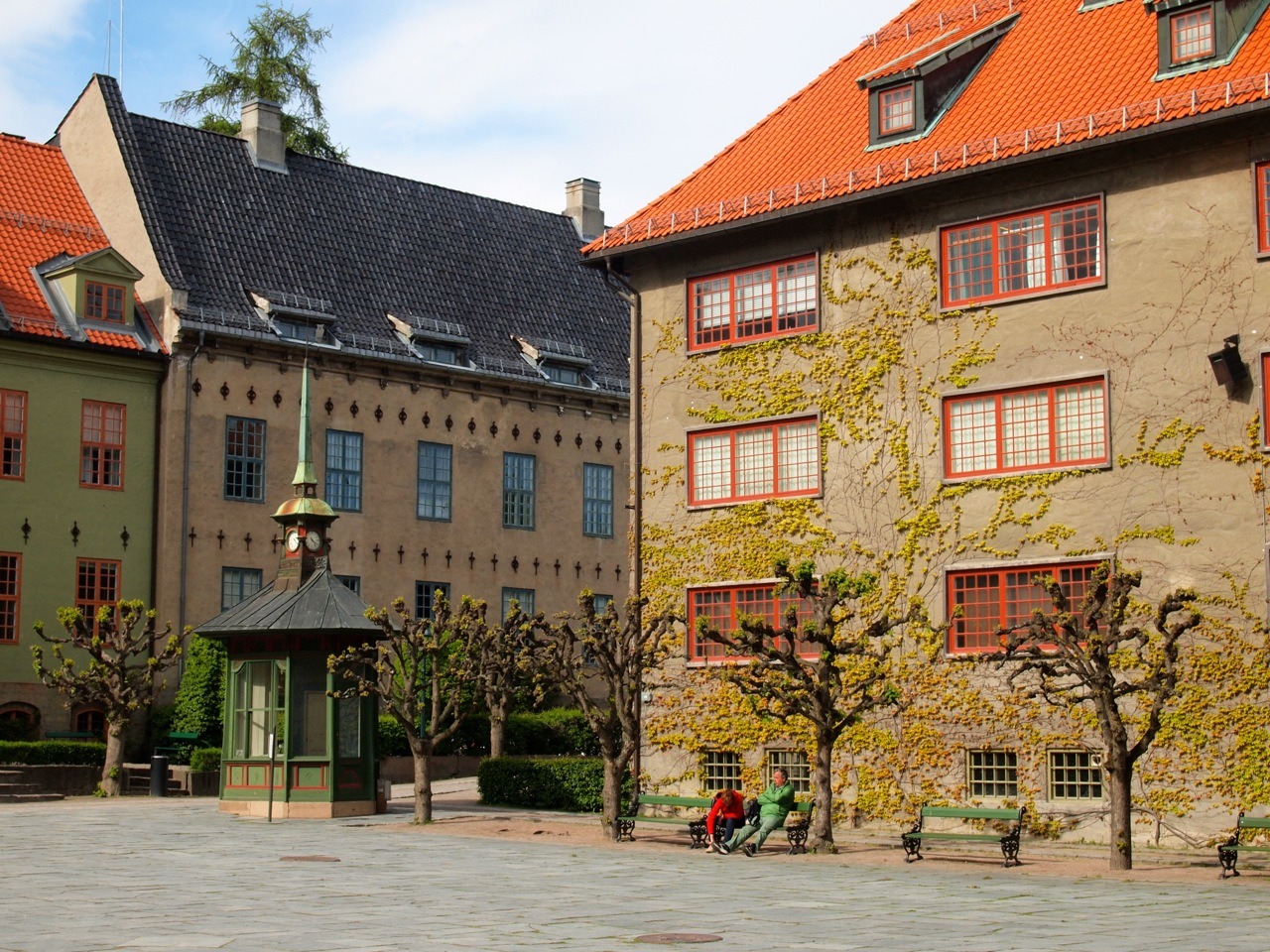
When most people talk about Norway, they talk about the fjords. The mountains. The train rides. The incredible scenery and natural beauty. (And I've talked about all those things, too!)
But you hardly hear anyone rave about Oslo, the Norwegian capital.
As an avid reader of other travel blogs, I can't remember reading very many posts about Oslo before my first trip there.
I assumed this was just because it was “just another” big European city; I assumed that maybe there weren't that many things to do in Oslo that really stood out, and that's why I hadn't heard much about the city.
But then I went there on my (first) 10-day trip around Norway and have since re-visited several times over the years.
And guess what? I discovered that Oslo is totally cool.
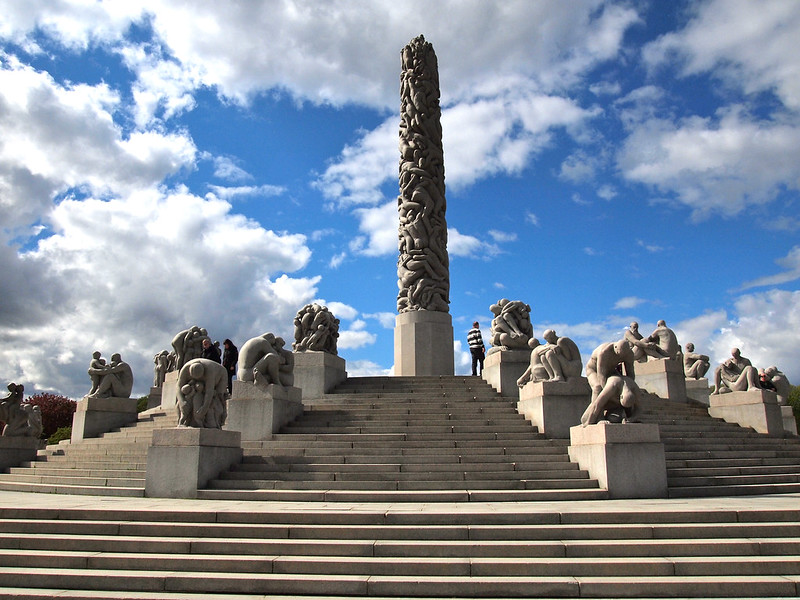
Oslo is clean and colorful and filled with green spaces. The people are friendly (even the palace guards will talk to you here!), and it has a fun mixture of both old and modern architecture. And it's not really even that huge; the population of Oslo is just over 700,000.
Oslo is definitely not just another cookie cutter city in Europe, and I don't think you should skip over it when you go to Norway. In fact, there are so many cool things to do in Oslo that I recommend spending at least a few days there!
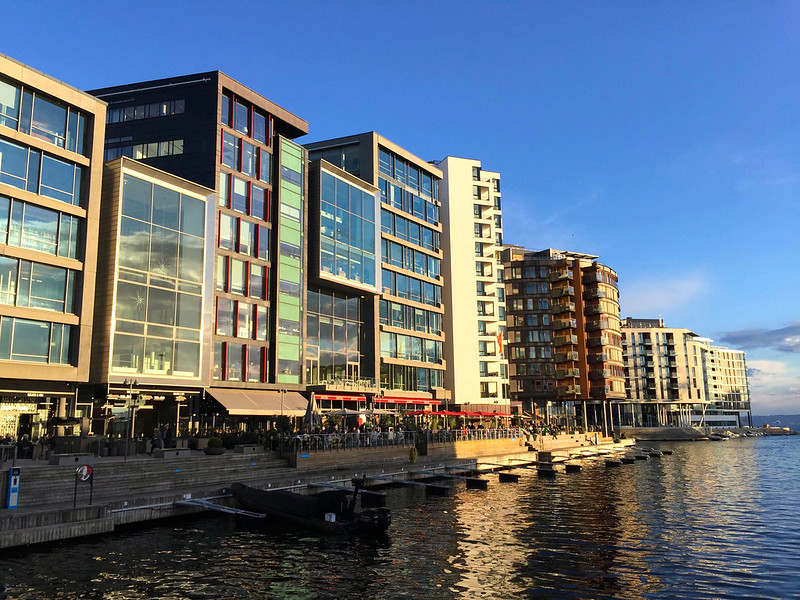
How many days should you spend in Oslo?
Most people will combine a visit to Oslo with other parts of Norway – maybe you'll take the Norway in a Nutshell tour to Bergen, or take the train up to Trondheim. Maybe you'll fly from Oslo up north to Tromso or the Lofoten Islands. Regardless, be sure to dedicate a few days just to Oslo.
I think 3 days is the perfect amount of time to spend in Oslo. You can see all the highlights in 2 days, but with 3 days you'll be able to take your time and soak in the museums, architecture, parks, cafes, waterfront, and more.
Get an Oslo Pass
Let's address the elephant in the room first: Oslo is an expensive city. Hotels are actually fairly affordable, but everything else – especially food and activities – is VERY pricey compared to what you're probably used to paying at home (unless you live in a Nordic country yourself).
The best way to save some money in Oslo without even trying is to get yourself an Oslo Pass. The Oslo Pass is a tourist pass that gets you free admission to 30 museums and sights, plus unlimited free public transportation on local tram, subway, bus or public ferry services.

You can get an Oslo Pass for 24, 48, or 72 hours, prices are $46, $65, and $83 per pass. If you plan to do a lot of sightseeing in Norway and visit a couple different museums, then this is definitely worth it!
It's also super helpful to have public transport covered, as that cost can also add up (a single tram ride runs $3.60, for example).
You can buy an Oslo Pass at the Oslo Visitor Centre, or pre-purchase one in the Oslo Pass App. More info on the Oslo Pass here.
Top things to do in Oslo in 3 days
With 3 days in Oslo, you can tick off all the highlights – but you still won't be able to see it all. Here's a look at the top things to do in Oslo.
1. Walk along the Oslo waterfront
Cost: Free

Whenever I get to a new city, I like to do one thing first: WALK. Walking around a new city is the best way to get to know it, in my opinion, and walking along the trendy new waterfront in Oslo is a great way to see the old and modern being mixed together.
The waterfront area has been revamped in recent years, with a bunch of really modern buildings going up alongside some of the older ones. The Harbour Promenade allows you to walk for kilometers, seeing some of Oslo's top sights along the way.
There are lots of places to stop along the way for food or a drink, too, especially during the summer months when lots of pop-up bars and eateries roll out along the water. (Sukkerbiten has a great outdoor space with bars and food trucks.)

Also be sure to stroll through Aker Brygge, a pier area that's filled with bars and restaurants. It's a very lively and pretty part of the waterfront.

2. Climb the Oslo Opera House
Cost: Free
Located on the waterfront not far from Oslo's central train station, the Oslo Opera House is home to the Norwegian National Opera and Ballet – and it's worth visiting even if you won't be seeing a show.
Built between 2003 and 2007, the Oslo Opera House is meant to resemble a glacier in Norway's harbor. Its design has won architecture awards, and visitors are encouraged to not only visit the interior, but to also climb the exterior for excellent views of Oslo.


This is a great spot for people watching, and there's even a small local beach (Operastranda) right next to the Opera House that locals use all summer long.

3. Book a seaside sauna
While nearby Finland is really the king of saunas, Norwegians also embrace sauna culture – especially when paired with a dip in a fjord!
All over Oslo, you'll see little floating sauna rooms. These urban saunas can be booked in advance for a private steam, and all have ladders to help you cool off in the fjord. Locals and tourists alike use these saunas along the harbour promenade; there are about 5 different spots to enjoy them.

(There's also an easy spot for fjord bathing called Sørenga Sjøbad if you want to skip the sauna part and just get in the water!)
4. Visit Akershus Fortress
Cost: 100 NOK, or free with Oslo Pass
A lot of Oslo looks and feels new, but the Akershus Fortress and Castle definitely represents the old in the city. Akershus dates back to the 1290s, when it was originally built as a royal palace.
The fortress/castle was besieged several times throughout its history, but interestingly was never taken in battle – but it WAS surrendered to Nazi Germany in 1940, and was occupied by them until 1945.
Today, Akershus is still used by the Norwegian military, but is also open to visitors. You can visit both the Norwegian Armed Forces Museum and Norway's Resistance Museum here, as well as tour the castle.
(And if the fortress looks oddly familiar to any Disney fans, part of it is replicated in the Norway pavilion in Disney World' Epcot!)
5. Stop in to City Hall
Cost: Free
Oslo's City Hall doesn't look all that special from outside, but inside it's covered in murals and a beautiful marble floor sourced entirely from within Norway.
There are guided tours offered during the summer, but you can also just pop in to see it on your own.
6. Stroll Karl Johans Gate
Cost: Free
Also on your walking tour of Oslo, you can hit up Karl Johans Gate, the main street in the center of Oslo that leads from the train station to the Royal Palace. Closer to the train station, there are lots of shopping options interspersed between pubs and cafes.
Closer to the Royal Palace, the street is colorful and partially tree-lined, and is a great place to sit down and sip on a cup of coffee.


7. See the Royal Palace
Cost: Free (guided tours are 175 NOK)
Norway still has a functioning monarchy that calls the Royal Palace home, so tours are only offered to the public for a couple months in the summer. (Info on tours is here.)
But you can still walk right up to the palace on your own, stroll through the surrounding park and gardens, and stop for a photo – or even a chat! – with one of the royal guards. I was pretty excited to see so many female guards guarding the palace, too!

8. Visit a museum on Bygdøy
Cost: Varies, but most of these museums are free with an Oslo Pass!
Oslo has a TON of cool museums – we're talking really unique museums that you won't find anywhere else in the world. And several of these museums are located close to one another on an peninsula called Bygdøy that you can reach via boat from central Oslo.
Some of the museum you can visit on Bygdøy include:
- The Fram Museum, which celebrates Norwegian polar exploration and houses the polar ship Fram.
- The Kon-Tiki Museum, focusing on the expeditions of world-renowned scientist and explorer Thor Heyerdahl.
- Norwegian Maritime Museum, which is exactly what it sounds like.
- The Viking Ship Museum*, which houses the remains of Viking burial ships that are more than 1,000 years old.
- Norwegian Museum of Cultural History (Norwegian Folk Museum), which is an open-air museum showing life and culture of Norway. The famous stave church is here.
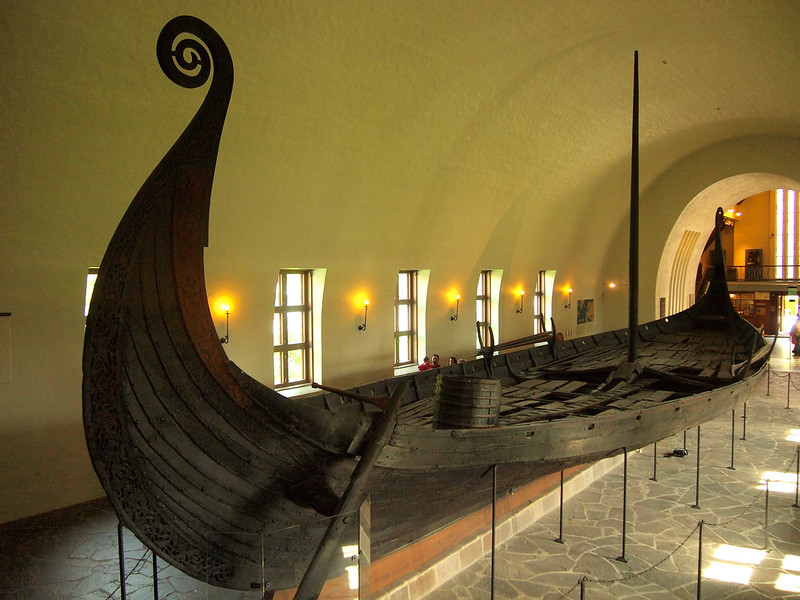
*Note that the Viking Ship Museum is being completely reimagined/rebuilt, and will not re-open until 2025 at the earliest.
9. Visit another Oslo museum
Cost: Varies, but most of these museums are free with an Oslo Pass!
And that's not it when it comes to museums in Oslo! Some others you might be interested in include:
- The Munch Museum, dedicated to expressionist painter Edvard Munch (famous for his “The Scream” painting).
- The National Museum, which is a brand new museum covering Norwegian art, craft, and design.
- The Nobel Peace Center, because the Nobel Peace Prizes are awarded in Oslo each year (currently closed as of June 2023, though).
- Museum of Oslo, city museum located in Frogner Park.
- Natural History Museum, which is the largest natural history museum in Norway.
- Oslo Transport Museum, which has a large collection of vintage trams and buses.
- The Holmenkollen Ski Museum, located inside Oslo's huge ski jump, which presents more than 4,000 years of skiing history.

10. Check out Frogner Park / The Vigeland Park
Cost: Free
I mentioned before that Oslo has a ton of green spaces, and one of my favorites is Frogner Park, which is often called Vigeland Park by non-locals. Frogner Park began as a manor estate in the 1750s, and the Vigeland Park part came in in the 1930/40s, when artist Gustav Vigeland designed more than 200 granite and bronze statues to install in the park.
The Vigeland installation alone covers 80 acres, and consists of groupings of statues of naked humans doing (mostly) normal things like running, dancing, hugging, etc. The sculpture park is the world's largest made by a single artist, and truly is impressive.

There's a bridge, large fountain, and monolith all designed by Vigeland, and you can easily spend a couple hours here seeing all the statues.


The is one of Oslo's top attractions, and locals use it a lot, too. On a sunny weekend day, the park is filled with Norwegians walking, playing, and picnicking.
11. Explore another neighborhood
You'll probably be spending most of your time in central Oslo and along the waterfront, but if you want to explore another neighborhood, make it the hipster Vulkan neighborhood in Grünerløkka. This part of Oslo is artsy and sustainable, with eco-friendly architecture just north of the city center.
There's even a street food tour you can take in this part of Oslo.
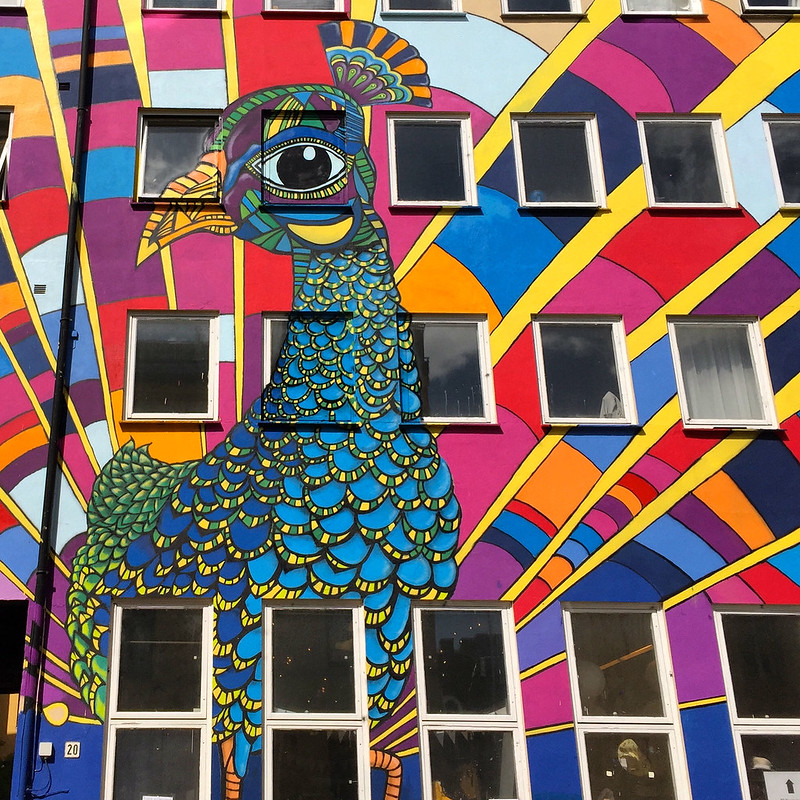
12. Eat at a food hall
I mentioned before that food is VERY expensive in Oslo. We're talking main courses averaging $30 per person or more in a restaurant; you can very easily spend $100 on a meal for 2 without even trying.
If you want to save a bit of money AND try something fun, check out one of the food halls dotted around Oslo. Inside these trendy spots you'll find a variety of quick-service food stalls and usually some cool seating options.
Just a few I know of that I've tried include:
- Barcode Street Food near the Opera House
- Oslo Street Food in central Oslo
- Vippa on the waterfront between Akershus and the Opera House
- VIA Village Food Court near Aker Brygge
- Mathallen in Vulkan

13. Go on a fjord cruise
Let me preface this my saying that there are much better options for exploring Norway's fjords than from Oslo. So if you're heading further north in Norway, I would skip this one.
BUT, if you're only Oslo on a city break, then by all means book a cruise to get out on the water and get a little taste of the fjords. Oslo actually sits at the end of a fjord (the Oslo fjord), and several companies offer sightseeing cruises out into it. This 2-hour fjord cruise takes place on an authentic sailing ship.
Where to stay in Oslo
I've been to Oslo a few times now, and have enjoyed staying both in the city center, and in the Vulkan neighborhood.
My top hotel picks include:
- Thon Hotel Opera, which is between Oslo's central train station and the Opera House.
- Thon Hotel Terminus, which is close to Oslo's central train station (where the airport train arrives, and where trips like Norway in a Nutshell depart from).
- Scandic Vulkan in Oslo's hipster Vulkan neighborhood.

How to get around in Oslo
- On foot – A lot of things in Oslo can be reached on foot within the city center.
- Public transit – Oslo has trams, buses, and a metro. You can download the Ruter app to purchase tickets on your smartphone, or you can pay with a contactless method when you get on a tram or bus.
- Bike share/scooters – Oslo City Bikes and electric scooters are both available for quick trips around the city.
- Taxi/ride share – Uber operates in Oslo, and you can also try the MiVai app, which allows you to order a taxi based on the lowest rates available.
So what do you think of Oslo now? Have I sold you on the Norwegian capital?
Pin it for later:
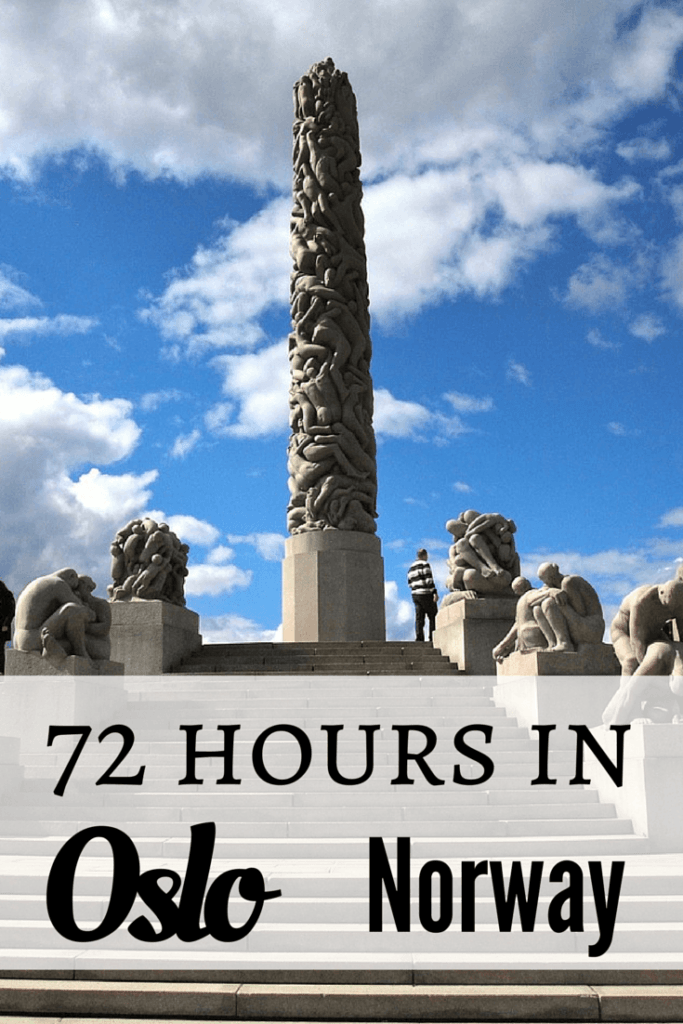

Amanda Williams is the award-winning blogger behind A Dangerous Business Travel Blog. She has traveled to more than 60 countries on 6 continents from her home base in Ohio, specializing in experiential and thoughtful travel through the US, Europe, and rest of the world. Amanda only shares tips based on her personal experiences and places she's actually traveled!

















I love the idea of visiting Oslo but it sounds like i must set aside a very healthy budget for the travel, especially for the cost of food and meals. I now have a 11 year old boy who can eat a lot.
Norway is quite a pricey destination! Maybe you could consider staying in an apartment or other self-catering option so you could prepare some meals for yourself. Groceries are much more affordable in Norway than eating out for every meal!
I haven’t been to Norway since 1968 when I rode over on a motor scooter from Sweden on a 5 month tour of Europe in my youth! The entrance to the city of Oslo at night was one beautiful sight that I have never forgetter! I remember having three fish dinners in a matter of 24 hr & I don’t even like fish but it was so delicious that I kept going back… to the Goldfisken, wonder if it could stilll be there? I visited all of the places on your list & enjoyed the pictures you posted so much! You’ve awakened my desire to return! Thank you, Amanda! ( ps, I am also a small town Ohio girl!)
So glad that I could bring back some great memories of Oslo for you!
Oslo looks absolutely fantastic. From the Norsk Folkemuseum to the \Vigeland Park the city looks absolutely amazing. My one question about Oslo is what are the local “Street Foods” that people typically eat? Is it herring in white sauce or what other items do they enjoy?
Honestly I don’t remember seeing any street food there! Restaurants, yes, but not really street food. (Though I’ll try to pay more attention during my next trip.)
I noticed these posts are over a year old. I feel I must add however: I am of Nordic descent, albeit Swedish rather than Norse. I did attend and graduate from a Norwegian founded school in the U.S., St.Olaf College in Minnesota. I know there some ethnic differences, but to me, Scandinavian is any of three/four ethnicities: Denmark, Sweden, Norway and Finland. Back in MN a “mixed” marriage is a Swede marrying a person of Norwegian descent. BTW, they’re all Lutheran. Ultimately, we all live peacefully!
Yes these posts are from 2015, but that doesn’t mean Oslo is any less cool! 😉
Oslo is a beautiful city. Thinking about visiting Norway in May.
[…] https://www.dangerous-business.com/2015/06/72-hours-in-oslo-norway/ […]